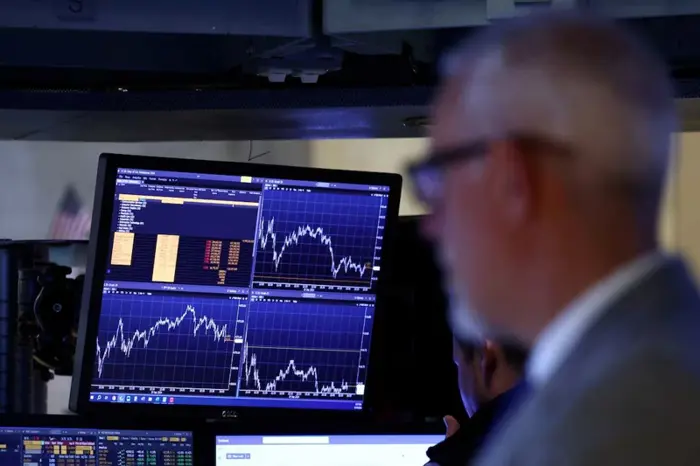
BIX ARTICLE
Sinking US equity risk premium rings alarms
Jan 13, 2025
|
4 min read
Featured Posts
Social Bonds Illustrative Use-Of-Proceeds Case Studies Coronavirus
Jul 06, 2020
|
2 min read
Sustainable Banking Network (SBN) Creating Green Bond Markets
Jul 06, 2020
|
2 min read
Why is Inflation Making a Big Comeback After Being Absent for Decades in the U.S.?
Mar 24, 2022
|
7 min read
SC issues Corporate Governance Strategic Priorities 2021-2023
Mar 29, 2022
|
3 min read

THEORY suggests that the divergence in value between US stocks and bonds will eventually get so extreme that investors will need to reduce their exposure to ultra-pricey equities and start loading up on beaten-down Treasuries.
If the so-called US “equity risk premium” (ERP) can be considered a useful indicator, that point may soon be upon us.
The ERP can be measured in various ways, but it is essentially the difference between the earnings yield on the S&P 500 index and the 10-year Treasury yield.
In “normal” times the ERP should be positive, offering investors a reasonable premium for holding stocks over “risk-free” government debt.
These are not normal times though. Long-term bond yields are soaring even though the Federal Reserve has begun to cut interest rates, as sticky inflation and Washington’s worrisome debt and spending trajectory are rattling investors.
Meanwhile, the artificial intelligence frenzy and “US exceptionalism” narrative led by a handful of Mega Cap tech stocks have fuelled a boom on Wall Street that has lifted aggregate valuations to their highest level in years – or even decades by some measures.
As a result, the ERP is collapsing. By some gauges it is the lowest in almost a quarter of a century, and has even slipped into negative territory. If the 10-year Treasury yield continues rising, the ERP is liable to shrink even further. So stocks look expensive, nominally and relative to bonds, but does that mean it’s time to hit sell?This situation is ringing alarms for many equity strategists. Societe Generale’s team calculates that a tick up in the 10-year yield to 5% would push the ERP into “unhealthy territory” although probably wouldn’t cause much pain in the S&P 500.
They argue the “buy” signal for bonds will flash brighter when the Treasury yield approaches nominal trend growth, currently around 5.2%.
“We believe this should be the anchor point for the bond scare on the growth outlook and the point where US bonds become fundamentally appealing,” they wrote this week.
The 10-year yield hit 4.79% last Friday, the highest since November 2023, and more than 100 basis points higher than when the Fed started lowering its policy rate in September. Of course, there is no one trigger to buy stocks or bonds, far less a specific number or single relative value metric. Portfolio adjustment is a complex and often lengthy deliberation, and investors currently have to navigate a host of unknown variables like the incoming Trump administration’s trade policies and the Fed’s next steps.
What’s more, the ERP can send different signals depending on what’s driving it and the wider macroeconomic context.
In March 2009, the ERP soared to a historic high of 7% as bond yields were flattened near zero after the collapse of Lehman Brothers six months earlier. March 2009 turned out to be the stock market low, with the S&P 500 bottoming out at an eerie 666 points.
Similarly, the ERP spike towards 6% in April 2020 at the onset of the Covid-19 pandemic was fuelled by the collapse in Treasury yields and also signalled the equity market low. The consensus opinion today is that the recent decline in the ERP is primarily being driven by the yield spike, suggesting bonds are becoming attractive on a relative value basis.
Investors tend to like nice round numbers, so a 10-year bond yield of 5% would likely draw in some buyers, but portfolio managers may be hesitant to go all in, given the current uncertainty surrounding US fiscal and monetary policy.
As Unlimited’s Bob Elliott notes, it is an unsustainable divergence – either yields need to fall enough to justify existing equity prices, or stocks need to fall to reflect higher rates. The “buy bonds” and “sell stocks” signals may be flashing amber, but determining when they will turn to green remains a challenge. — Reuters
Jamie McGeever is a columnist for Reuters. The views expressed here are the writer’s own.
Disclaimer
The information provided in this report is of a general nature and has been prepared for information purposes only. It is not intended to constitute research or as advice for any investor. The information in this report is not and should not be construed or considered as an offer, recommendation or solicitation for investments. Investors are advised to make their own independent evaluation of the information contained in this report, consider their own individual investment objectives, financial situation and particular needs and should seek appropriate personalised financial advice from a qualified professional to suit individual circumstances and risk profile. The information contained in this report is prepared from data believed to be correct and reliable at the time of issuance of this report. While every effort is made to ensure the information is up-to-date and correct, Bond and Sukuk Information Platform Sdn Bhd (“the Company”) does not make any guarantee, representation or warranty, express or implied, as to the adequacy, accuracy, completeness, reliability or fairness of any such information contained in this report and accordingly, neither the Company nor any of its affiliates nor its related persons shall not be liable in any manner whatsoever for any consequences (including but not limited to any direct, indirect or consequential losses, loss of profits and damages) of any reliance thereon or usage thereof.
YOU MAY ALSO LIKE
ARTICLE
Dec 23, 2025
|
5 min read
ARTICLE
Dec 22, 2025
|
6 min read
ARTICLE
Dec 18, 2025
|
7 min read
ARTICLE
Dec 16, 2025
|
5 min read


